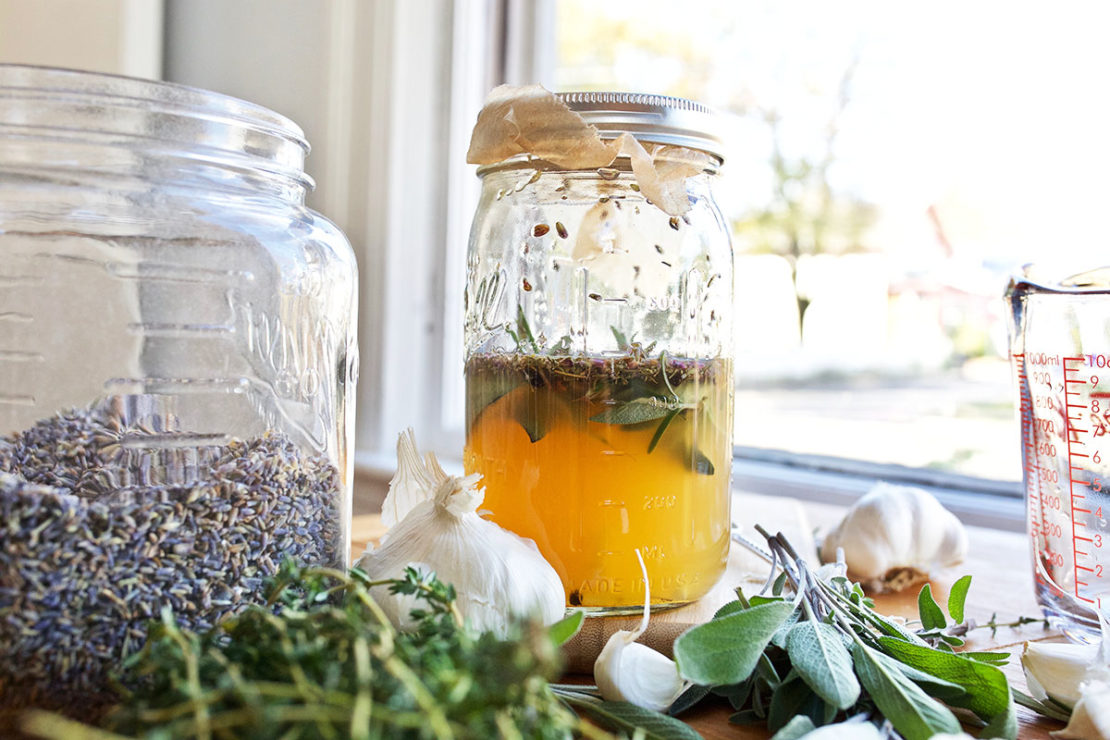
How to Make and Use the Legendary Four Thieves Vinegar Blend
Have you heard of the Four Thieves Vinegar? If not, come learn about the folklore surrounding this timeless preparation, how the ingredients in it can be used to support wellness during the fall and winter, and how to make it using an easy recipe that is versatile in its actions and uses.
History and Folklore of the Four Thieves Vinegar Blend

In medieval times, four thieves were said to rob the homes of those suffering from illness and those who had died from the 17th-century plague, the Black Death. It is said that on moonless nights in Marseilles, France, the thieves would anoint their bodies in vinegar that had been infused with “protective” herbs now known to have antibacterial and antiviral properties. This herbal vinegar was thought to give the thieves an advantage against contracting the illness. Fleas were thought to be one especially sneaky carrier of the plague. In addition to its antimicrobial potential, the thieves’ aromatic cloak may have also acted as a natural flea repellant!
At first, the four thieves’ behavior wasn’t of much consequence, as folks assumed the plague would eventually take hold of them. However, the thieves’ resistance was strong, and their thievery continued. When they were finally apprehended, judges offered a less agonizing form of execution if they would be helpful by sharing their immunity secret.
An alternative to this tale is that the four thieves had been caught for their acts of robbery and were then sentenced to bury the dead after the plague hit. In order to try and stave off catching the disease, they created this potent herbal vinegar in which they rubbed behind their ears, on their temples, and in their hands.
Whichever myth is true, the recipe they revealed has been a well-known bit of folklore ever since, and today, we will share it with you! Let’s first take a look at some of the ingredients in this blend and how they can benefit wellness.
Benefits of Apple Cider Vinegar
Apple cider vinegar is the base of the Four Thieves vinegar blend. For folks making their own formulas at home, vinegar was and continues to be, an easy-to-access medium. It also turns out that vinegar itself may have also been a beneficial ingredient in the Four Thieves blend.
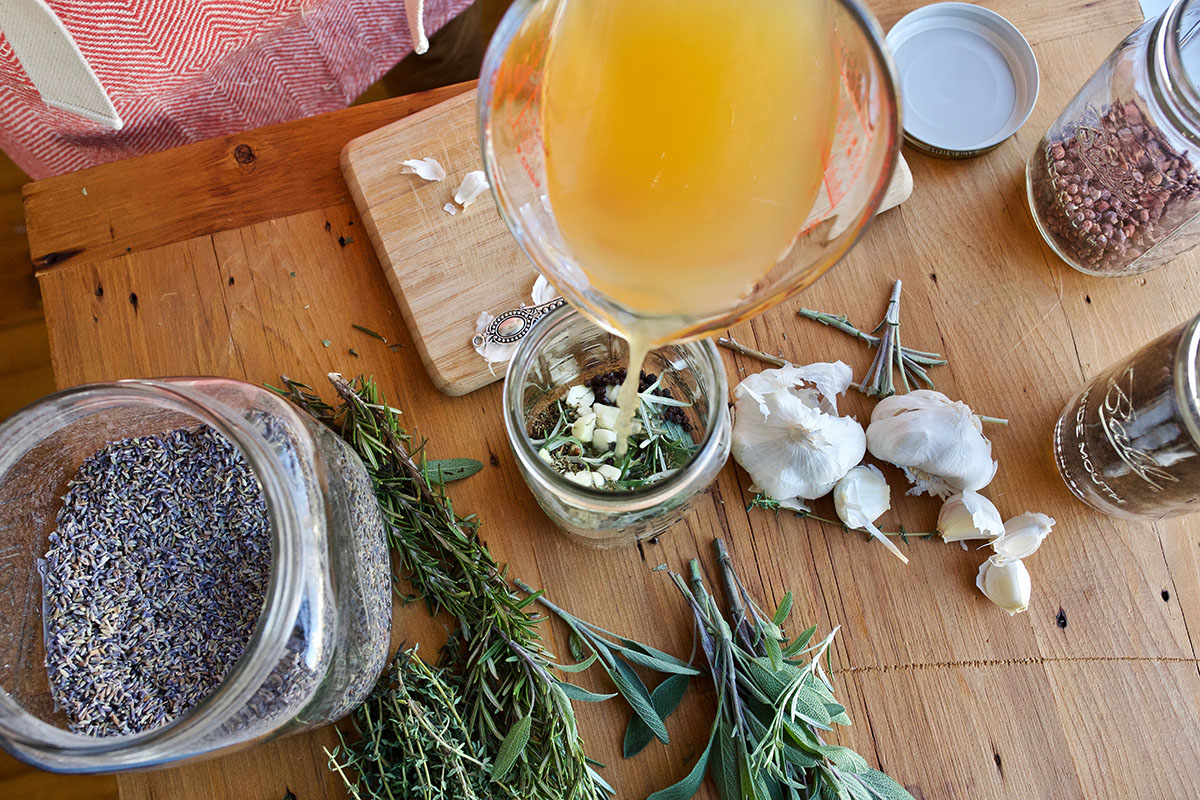
According to anecdotal and even some modern scientific reports, apple cider vinegar has been used to reduce microbes on external surfaces. There are also countless historical remarks about its virtues!
Here are two such notable historical accounts:
- Hippocrates, often referred to as the father of Western medicine, was known to use apple cider vinegar for managing wounds and infections both topically and internally.
- Sung Tse, the 10th-century creator of forensic medicine, advocated washing hands with sulfur and vinegar to avoid infection during autopsies.
Now, before we get too excited, let’s pause and put this interesting information into context.
Vinegar is no longer considered a disinfectant for medical settings, nor is it advised for use in wounds, because modern products designed for these purposes are far more effective (Gaas & Johnston, 2006). However, for some uses, vinegar is quite reasonable.
Household vinegar is usually safe on the skin and has shown some activity against common pathogens, and it is even believed that vinegar may increase the efficiency of some phagocytes, which are immune cells that engulf germs and foreign debris.
In a 2018 study, various concentrations of vinegar were tested for antimicrobial and immune-boosting actions against Escherichia coli (E. coli), Staphylococcus aureus (which can cause staph infection), and Candida albicans (an opportunistic pathogenic yeast, often called simply candida). Not only was the growth of these germs inhibited in the presence of vinegar, but phagocytes in contact with vinegar had a greater capacity to do their work (Serafin et al., 2018)! This study concluded that the effect was still not strong enough to claim vinegar an anti-infective in medical settings, but concluded that it did have some positive effect.
A 2015 study that compared vinegar to several chemical and commercial agents revealed that vinegar was useful as a household disinfectant (Basman, 2015). In fact, a 50% white vinegar solution was found to be the most effective method for disinfecting toothbrushes (Basman, 2015)!
There are also numerous other studies supporting the use of vinegar to disinfect produce from common bacteria:
- 5% acetic acid vinegar significantly reduced E. coli from the surface of lettuce (Chang & Fang, 2007).
- A 1:1 mixture of 4% acetic acid vinegar and lemon juice reduced Salmonella on carrots (Sengun & Karapinar, 2004).
And these were just a few examples!
There is also some rationale for how vinegar may act as a mild antimicrobial: “The organic acids in vinegar and mainly acetic acid pass into cell membranes of microorganisms leading to bacterial cell death” (Budak, et al., 2014). You can see that while we aren’t calling it a miracle cure, vinegar certainly has its merits!
When we combine herbs with vinegar we get double the benefit!
Four Thieves Vinegar Herbal Benefits
A renowned herbalist and aromatherapist from the early 20th century, Jean Valnet, used a formula perhaps closely related to the original Four Thieves vinegar blend. Though it is likely some of the herbs have changed and been adapted in the recipe through the years, modern herbalists typically use a combination of sage (Salvia officinalis) leaf, rosemary (Rosmarinus officinalis) leaf, lavender (Lavandula officinalis) bud, thyme (Thymus vulgaris) leaf, garlic (Allium sativum) bulb, juniper (Juniperus communis) berry, and black pepper (Piper nigrum) seed when making Four Thieves vinegar preparations.
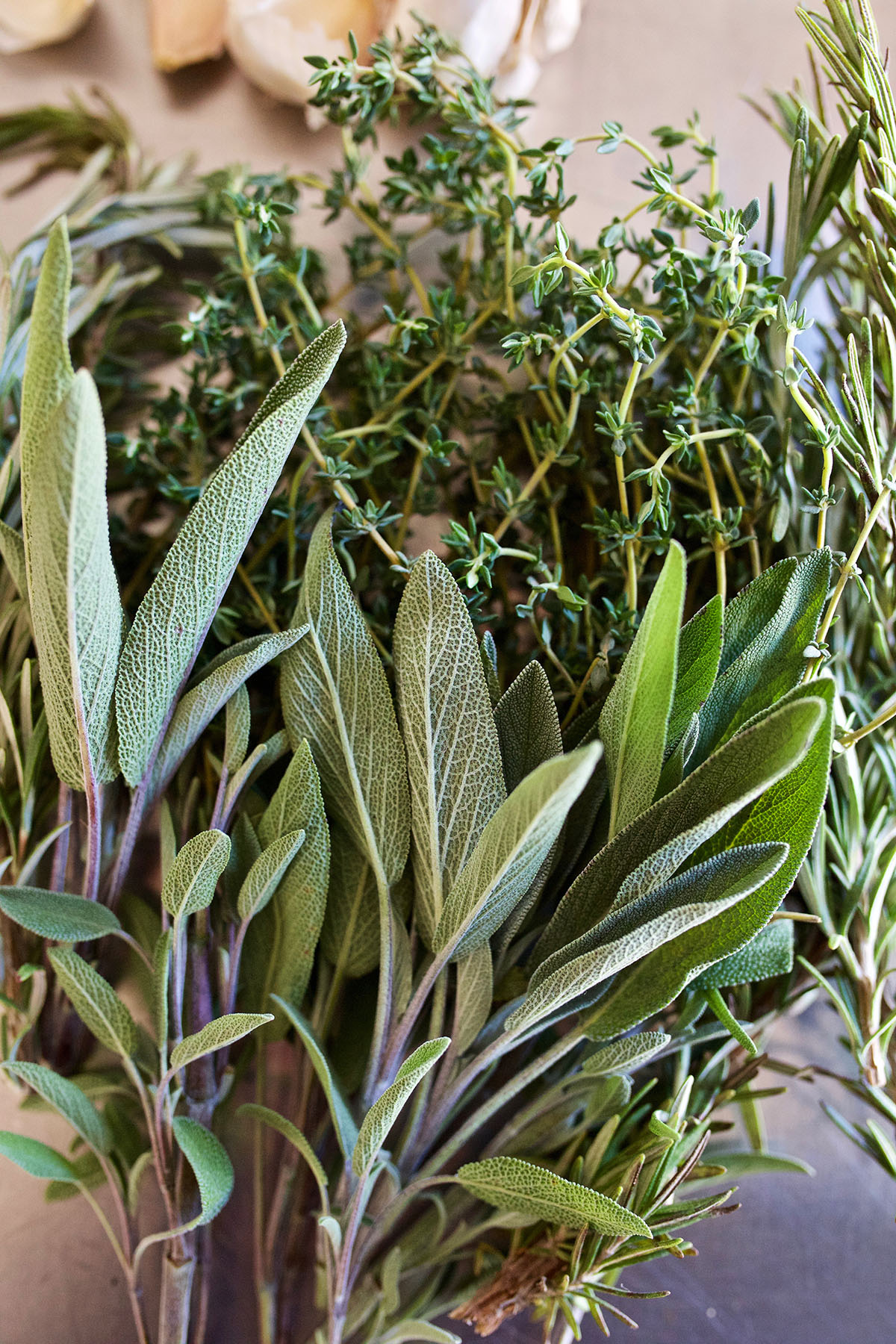
These herbs have several things in common. First, you’ll notice they are all on the warming side, energetically speaking, meaning they systemically warm the body. You may also notice that they all have aromatic, diffusive, and diaphoretic properties, as well.
Aromatic herbs, such as sage, lavender, and thyme, are those that contain a large amount of volatile oils. These herbs tend to have a stronger scent, which often coincides with antiseptic and antimicrobial volatile oils called monoterpenes (Ganora, 2009).
Diffusive herbs, such as garlic, sage, and rosemary, can bring heat from the core of the body and move, or circulate, it outwards to the surface of our skin. This action can also be directive of herbs within a formula to spread within the body for a desired effect (Ganora, 2009).
Diaphoretic herbs, such as rosemary, sage, and thyme, increase perspiration (Skenderi, 2003), which is a function of the detoxification process of the body. During sickness, promotion of sweating, or diaphoresis, can help regulate body temperature and release toxins (pathogens) (Holmes, 1989).
Below, we’ll dig into each of the herbs commonly used in the Four Thieves vinegar blend.
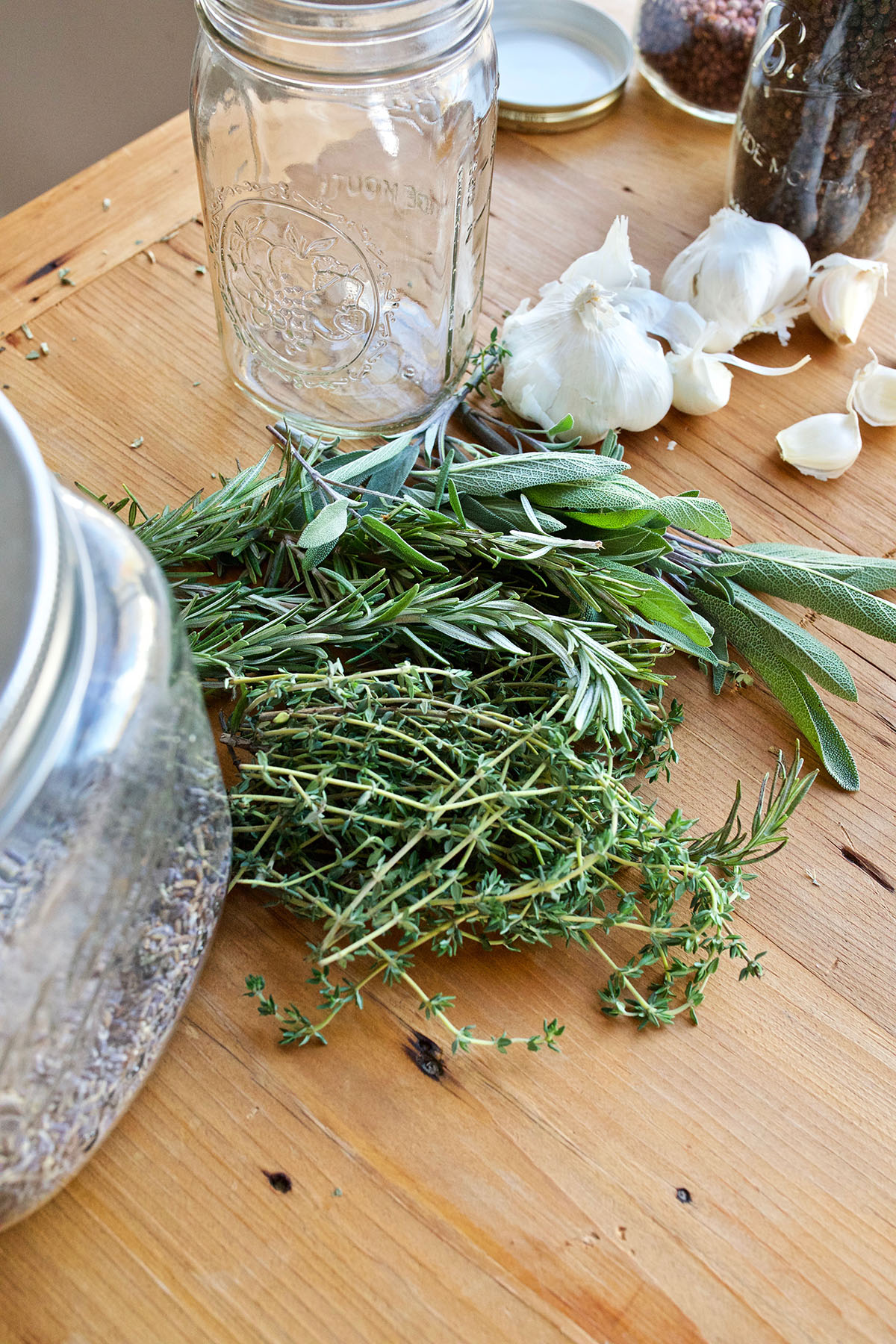
Sage (Salvia officinalis) leaf
A member of the mint (Lamiaceae) family, sage is an energetically warming and drying herb with aromatic, diffusive, and diaphoretic properties. While some may call it cooling, it is certainly moving, particularly in regards to circulation (Easley & Horne, 2016), and offers some of the best of both energetic qualities. Sage offers different actions depending on the preparation in which it is used. In warm preparations, it is especially moving to the circulatory system and is often used like a diaphoretic, while in cold preparations, it is more drying and has been used to reduce excess perspiration. Sage also has a longstanding use as an antimicrobial and antiseptic herb (Tilgner, 2009) due to its monoterpene volatile oils (Ganora, 2009).
Rosemary (Rosmarinus officinalis) leaf
Another mint family herb, rosemary is also known for its antibacterial properties due to the volatile oils in the plant (Tilgner, 2009) which can be beneficial when used internally or externally. Rosemary is a warm, drying herb with relaxant, diffusive properties that stimulate circulation in the body (Tilgner, 2009). This can help with body temperature regulation, which aids the body when fevers are present, as well as support the body’s immune system by speeding the transport of immune cells to tissues in need. Additionally, some infectious microbes, especially colds and flu viruses, are less viable at elevated body temperatures. The warming influence of rosemary is yet another way herbs support our body’s natural defenses!
Lavender (Lavandula officinalis) bud
Lavender is also a member of the mint family, and it has many useful actions and energetics that lend themselves to the Four Thieves vinegar blend. Lavender is cooling and drying. If lavender was one of the thieves’ original herbs, its antimicrobial nature may have been lavender’s standout action. The name lavender is derived from a word “lavar” meaning “to wash,” and it has been recognized as a purifying plant for ages. In addition to its antimicrobial properties, lavender also has anti-inflammatory and nervine properties (Tilgner, 2009). The anti-inflammatory and nervine actions can be additionally soothing during seasonal colds or flu, helping one rest, which is also supportive of our natural defenses.
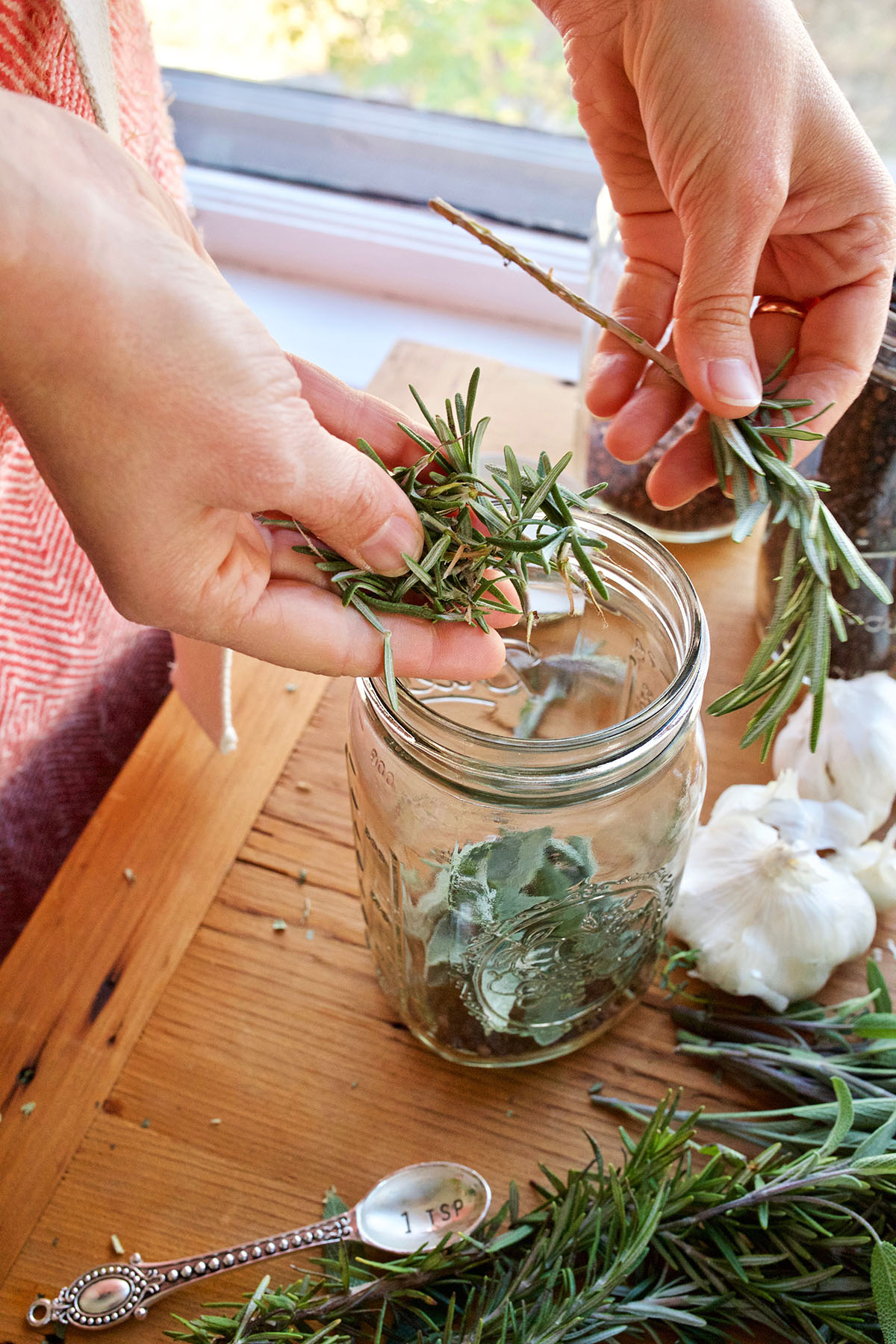
Thyme (Thymus vulgaris) leaf
Thyme is a mint family herb, too! Another aromatic with warming and drying qualities, thyme is a diaphoretic and diffusive herb traditionally used with respiratory tract conditions (Tilgner, 2009), particularly as a bronchodilator and as an anti-inflammatory agent (Hoffmann, 2007). Its main chemical constituent, thymol, is primarily responsible for its antibacterial, antimicrobial, antifungal (Tilgner, 2009) actions as well as its expectorant and antispasmodic actions (Herbal Academy, n.d.a.). In addition to the respiratory tract, many of its actions are focused on the digestive tract, and as an antiviral and antibacterial herb, it can act on infections of all kinds (Easley & Horne, 2016).
Garlic (Allium sativum) bulb
A member of the lily family, or Liliaceae, garlic’s energetic profile is hot and dry (Tilgner, 2009). It is diffusive and diaphoretic, as well as antimicrobial, antibacterial, antiparasitic, and antiseptic. Garlic is known to aid immune function (Tilgner, 2009) and contains 18 known antiviral and antibacterial substances (Gladstar, 1993). It has been shown to be effective against gram-positive and gram-negative aerobic bacteria as well as against antibiotic-resistant bacteria (Sivam, 2001). The volatile oils in garlic are excreted through the lungs, and the antimicrobial nature of these volatile oils thus makes it particularly helpful in the case of respiratory infections. Like thyme, it is also very useful in cases of digestive infections such as Helicobacter pylori (H. pylori) or digestive parasites (Tilgner, 2009).
Juniper (Juniperus communis) berry
As a member of the pine (Cupressacceae) family, juniper is aromatic, warming, and drying (Tilgner, 2009). It is also antimicrobial, antifungal, and antiseptic (Easley & Horne, 2016), and as a decoction, has been used to clean countertops, utensils, and even to cleanse wounds (Herbal Academy, n.d.b.). Juniper can build immunity and reduce infection, both bacterial and viral, in the digestive and respiratory systems (Holmes, 1989), including vaginal and urinary infections (Moore, 1989). In fact, according to herbalist Stephen Buhner, juniper’s antimicrobial activities act against 57 strains of 24 bacterial species (Buhner, 2012).
Black pepper (Piper nigrum) seed
A warming and drying herb in the Piperaceae family, black pepper is antiseptic as well as a circulatory stimulant (Easley & Horne, 2016). Black pepper can reduce infection, clear the sinuses, and promote sweating during cold and flu onset (Holmes, 1989). Black pepper may be the hottest of all the warming herbs and spices in this blend!
Let’s now look at how these herbs can be combined in a formula to create your very own Four Thieves vinegar blend.
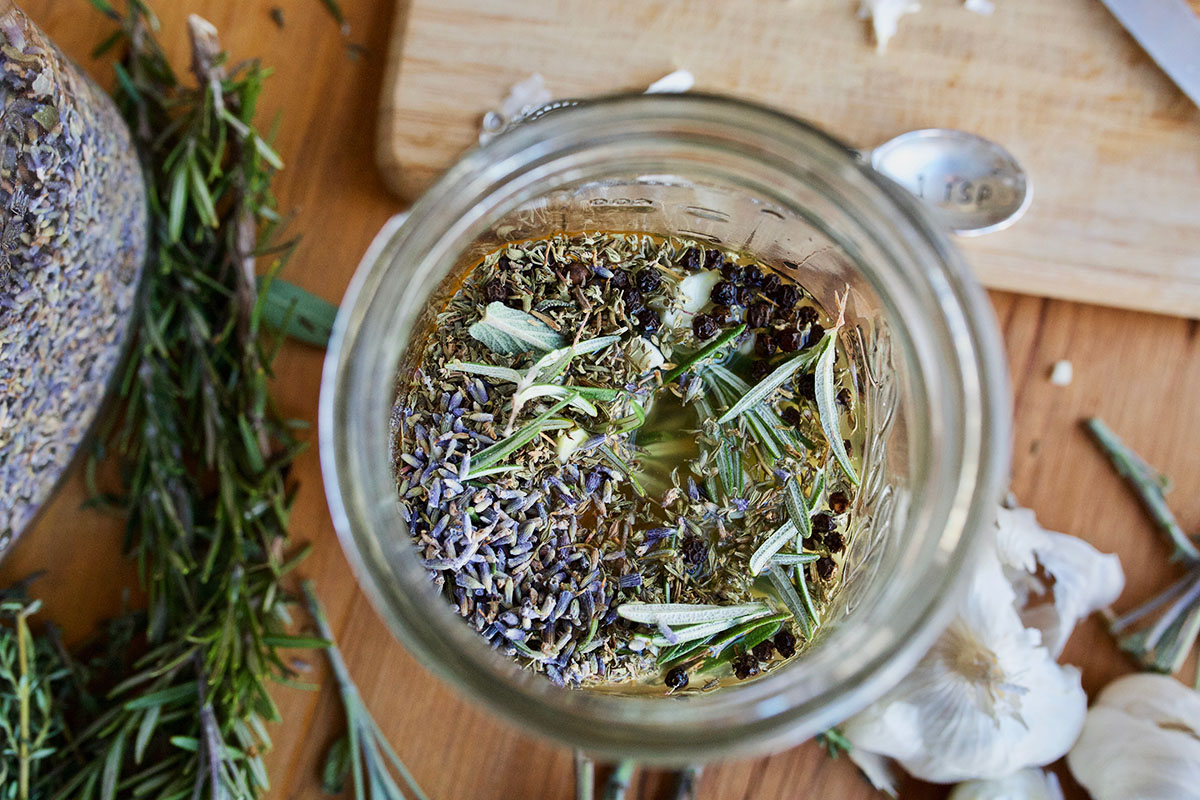

How To Make And Use The Four Thieves Vinegar Blend
When making the Four Thieves Vinegar Blend, feel free to use fresh or dried herbs, depending on what you have on hand. The following recipe calls for dried herbs, as these help to extend the shelf life of the preparation. If using fresh herbs, simply double the amount that is called for in the recipe (1 teaspoon of dried herb equals 2 teaspoons of fresh herb) and know that since fresh herbs contain water, the shelf life of the Four Thieves Vinegar will be reduced, and the preparation will need to be used more quickly.
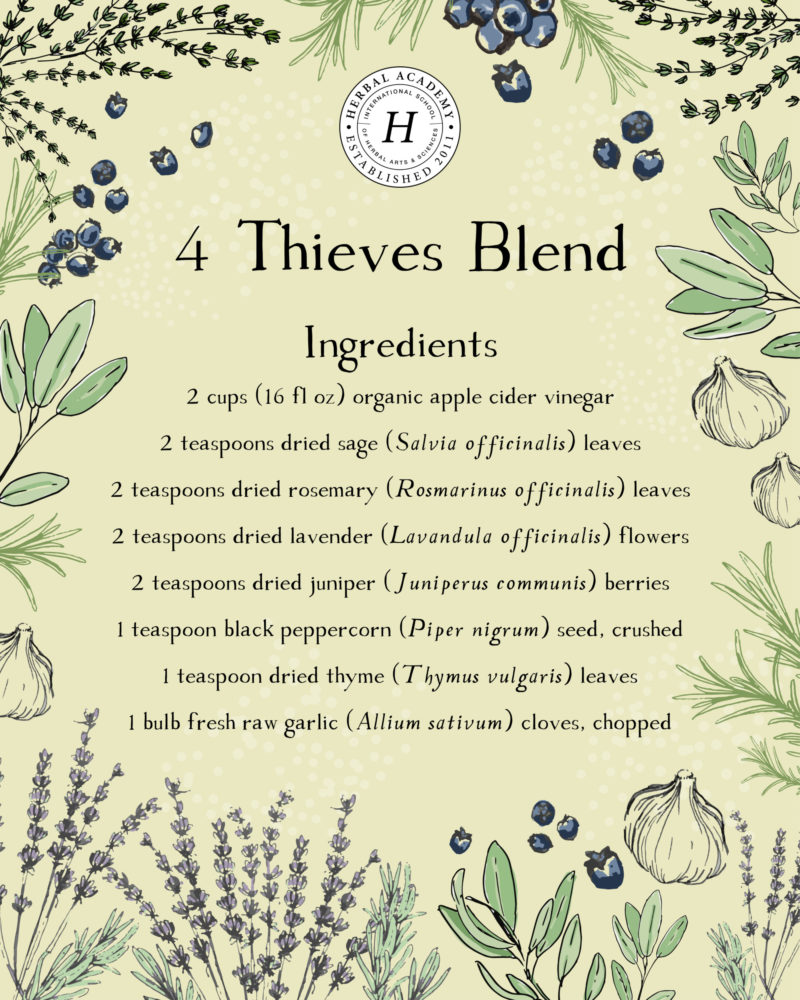
Four Thieves Vinegar Blend
Get ready to make perhaps one of your most versatile, spicy herbal blends! This infused vinegar can be used internally, externally, as an ingredient, or even as a cleaning item. You may find you enjoy (or grow used to) taking a swig each morning or night to promote wellness, or keeping it on hand for days you feel you may have had contact with someone who is sick. If nothing else, you can use it just as you would almost any other vinegar!
2 cups (16 fl oz) organic apple cider vinegar
2 teaspoons dried sage (Salvia officinalis) leaves
2 teaspoons dried rosemary (Rosmarinus officinalis) leaves
2 teaspoons dried lavender (Lavandula officinalis) flowers
2 teaspoons dried juniper (Juniperus communis) berries
1 teaspoon black peppercorn (Piper nigrum) seed, crushed
1 teaspoon dried thyme (Thymus vulgaris) leaves
1 bulb fresh raw garlic (Allium sativum) cloves, chopped
- Fill a quart-sized canning jar with the herbs and top off with organic apple cider vinegar to 1-inch below the top of the jar. Stir the mixture with a clean spoon to remove any air bubbles and to ensure the herbs are thoroughly saturated with the vinegar.
- Seal the jar with a plastic lid, or place a piece of parchment paper between the jar and a metal lid to prevent the vinegar from corroding the metal and touching any coating on the lid.
- Let the mixture macerate for a month in a dark cupboard. Shake the jar daily to keep the herbs and vinegar mixed as this will ensure a better extraction.
- After a month, strain the vinegar using a sieve and layered cheesecloth. Reserve the liquid and compost the herbs. Bottle the liquid in an amber-colored bottle to protect from light and label.
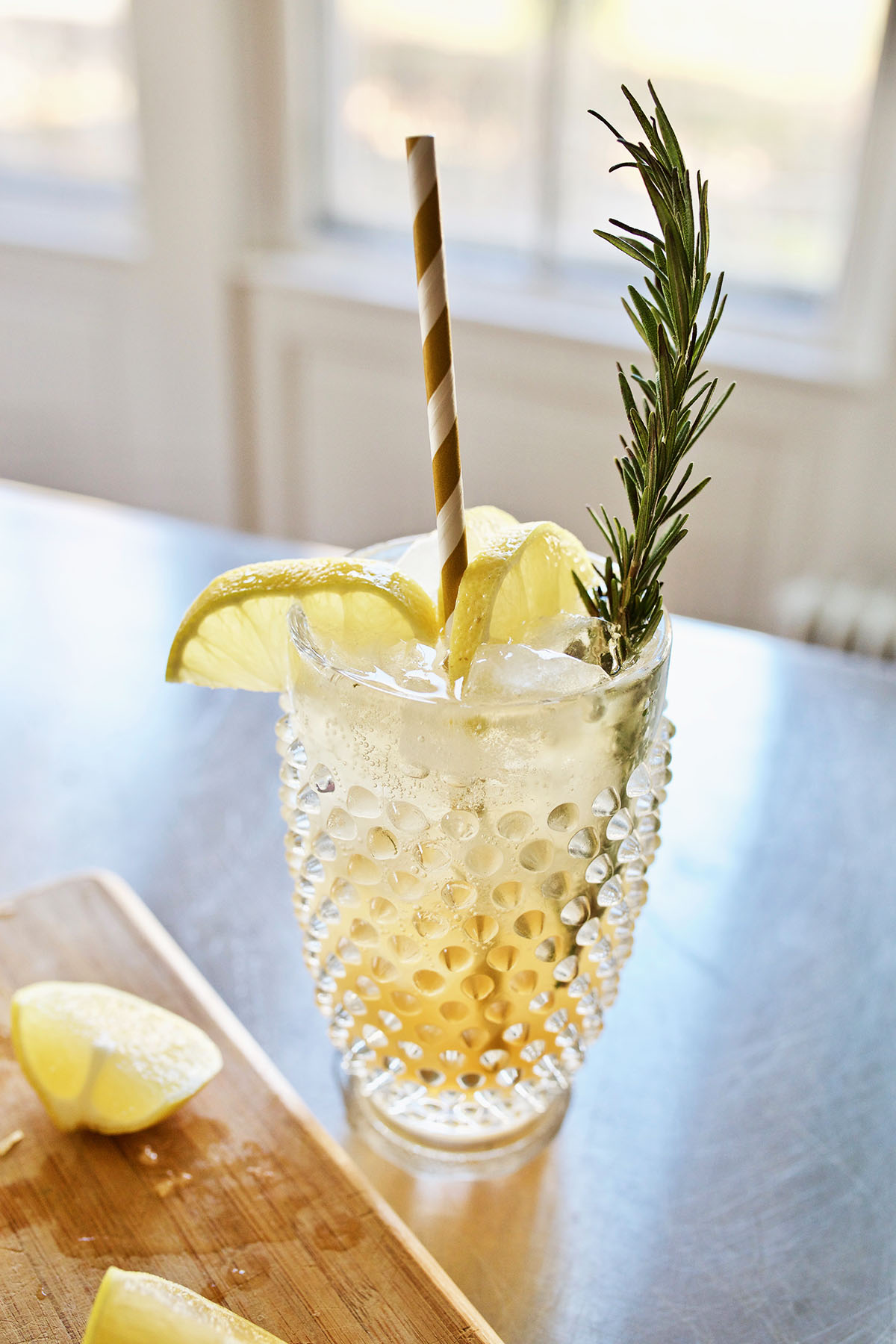
There are many ways to utilize the benefits of the Four Thieves vinegar blend! Use your Four Thieves blend wherever vinegar is called for in a recipe. If you are looking for a mocktail, add the blend to fizzy water and relax. Do you like to make your own salad dressings? If so, use your Four Thieves vinegar blend to make a delicious and flavorful vinaigrette base. If you feel a cold coming on, use this vinegar blend as a tincture or take it by the spoonful. It can also be a creative addition to the vinegar portion of a Fire Cider formula, or you could simply mix the vinegar with honey and enjoy as an easy oxymel.
This Four Thieves vinegar blend can also be used externally as a household cleaner for any kitchen or bathroom surface. Because of its antimicrobial action (Serafin, Shah, & Yagnik, 2018), it discourages the overgrowth of certain types of microbes when it comes into contact with them, thus helping you to keep your home healthy during cold and flu season.
Finally
Making a Four Thieves vinegar blend can be an easy, creative, and fun way to combat seasonal colds, flu, and infection. This all-purpose aromatic vinegar is just what you need to stay unplagued and healthy this season!
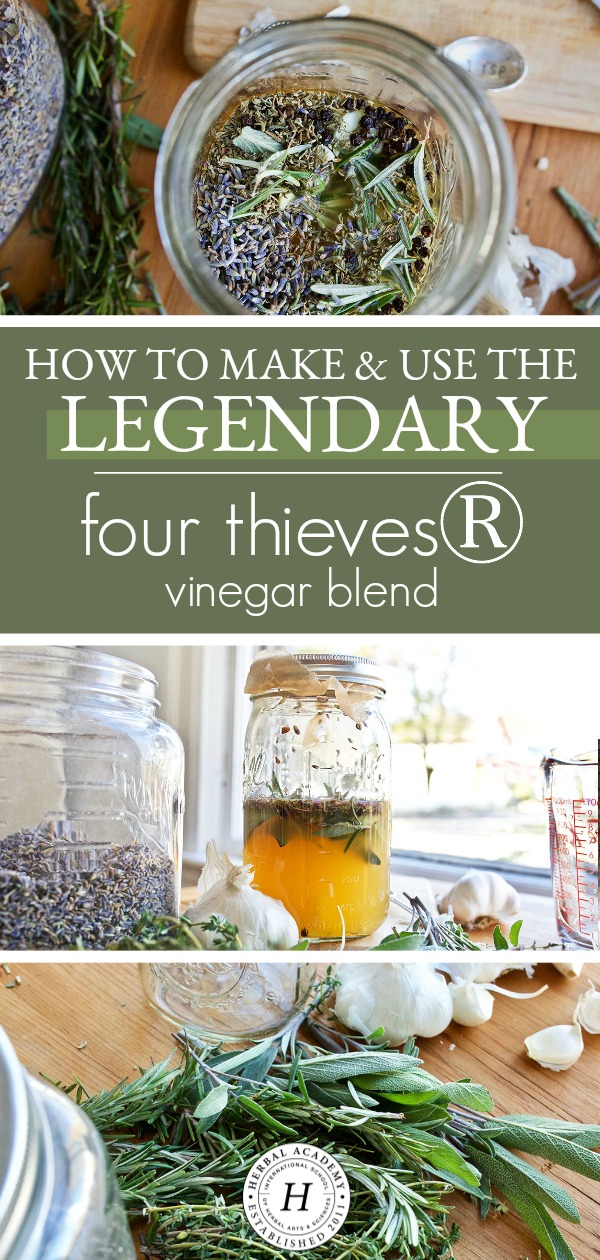
REFERENCES
Basman, A., Peker, I., Akca, G., Alkurt, M., Sarikir, C., & Celik, I. (2016). Evaluation of toothbrush disinfection via different methods. Brazilian Oral Research, 30(1), e6. https://doi.org/10.1590/1807-3107BOR-2016.vol30.0006
Budak, N., Aykin, E., Seydim, A., Greene, A., & Guzel‐Seydim, Z. (2014). Functional Properties of Vinegar. Journal of Food Science, 79(5), 757-764. https://doi.org/10.1111/1750-3841.12434
Buhner, S.H., (2012). Herbal antibiotics. North Adams, MA: Storey Publishing.
Chang, J., Fang, T. (2007). Survival of Escherichia coli O157:H7 and Salmonella enterica serovars typhimurium in iceberg lettuce and the antimicrobial effect of rice vinegar against E. coli. Food Microbiology, 24(7-8), 745–751. https://doi.org/10.1016/j.fm.2007.03.005
Easley, T., & Horne, S. (2016). The modern herbal dispensatory: A medicine-making guide. Berkeley, CA: North Atlantic Books.
Gaas, C., & Johnston C. (2006). Vinegar: Medicinal uses and antiglycemic effect. Medscape General Medicine, 8(2), 61. Retrieved from https://www.ncbi.nlm.nih.gov/pmc/articles/PMC1785201/
Ganora, L. (2009). Herbal constituents: Foundations of phytochemistry. Louisville, CO: Herbalchem Press.
Gladstar, R. (1993). Herbal healing for women. New York, NY: Simon & Schuster.
Herbal Academy. (n.d.a.). Thyme monograph. Retrieved from https://herbarium.theherbalacademy.com/monographs/#/monograph/5118
Herbal Academy. (n.d.b.). Juniper monograph. Retrieved from https://herbarium.theherbalacademy.com/monographs/#/monograph/5089
Holmes, P. (1989). The energetics of Western herbs: A materia medica integrating Western & Chinese herbal therapeutics. Cotati, CA: Snow Lotus Press, Inc.
Moore, M. (1989). Medicinal plants of the desert and canyon West. Santa Fe, NM: Museum of New Mexico Press.
Romm, A. (2018). Botanical medicine for women’s health. St. Louis, MO: Elsevier.
Sengun, I., & Karapiner, M. (2004). Effectiveness of lemon juice, vinegar and their mixture in the elimination of Salmonella typhimurium on carrots (Daucus carota L.). International Journal of Food Microbiology, 96(3), 301-305. https://doi.org/10.1016/j.ijfoodmicro.2004.04.010
Serafin, V., Saah, A., & Yagnik, D. (2018). Antimicrobial activity of apple cider vinegar against Escherichia coli, Staphylococcus aureus and Candida albicans; Downregulating cytokine and microbial protein expression. Scientific Reports, 8, 1732. Retrieved from https://www.ncbi.nlm.nih.gov/pmc/articles/PMC5788933/
Sivam, G. (2001). Protection against Helicobacter pylori and other bacterial infections by garlic. The Journal of Nutrition, 131(3), 1106-1108. https://doi.org/10.1093/jn/131.3.1106S
Skenderi, G. (2003). Herbal vade mecum. Rutherford, NJ: Herbacy Press.
Tilgner, S. (2009). Herbal medicine: From the heart of the earth. Pleasant Hill, OR: Wise Acres LLC.








